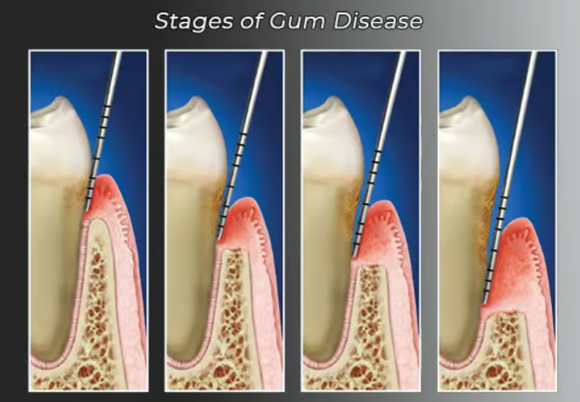Sachar Dental NYC
For SAME day / emergency appointments
Call (212) 752-1163
All the below content has been written by NYC Dentist, Dr. Sandip Sachar.
Gum Disease and Bleeding Gums
Everything You Need to Know About Bleeding Gums and Periodontal Disease
Bleeding gums can be a sign of gum disease or periodontal disease, a condition that affects millions worldwide. Gum disease is usually painless and can go unnoticed in its early stages. However, the consequences of untreated gum disease can be severe, including tooth loss and a higher risk of systemic disease and associated complications. A regular dental check-up with x-rays is enough to diagnose gum disease, and in its early stages, this disease is easily treatable.
What Causes Gum Disease?
Gum disease often stems from poor oral hygiene that allows plaque to accumulate on teeth. If not removed, plaque hardens into tartar, which irritates the gums and triggers inflammation. But the causes of gum disease go beyond brushing habits.
Contributing factors include:
- Smoking or tobacco use
- Poor oral hygiene and plaque and tartar buildup
- Hormonal fluctuations during pregnancy or menopause
- Medical conditions like diabetes
- Genetic predisposition
-
Stress and poor nutrition
Stages of Gum Disease

Stage One: Gingivitis
- Red, swollen gums
- Bleeding during brushing or flossing
- Mild tenderness
A professional dental teeth cleaning to remove plaque and tartar, combined with diligent brushing and flossing, is often enough to reverse gingivitis. The NYC dentists at Sachar Dental stress the importance of routine checkups to catch and treat gingivitis early, before it advances.
Stage Two: Early Periodontitis
- Persistent bad breath (halitosis)
- Receding gums, making teeth appear longer
- Formation of gum pockets
- Sensitivity to hot or cold
A dental deep cleaning procedure called scaling and root planning may be necessary to remove tartar and bacteria from beneath the gumline. Antimicrobial treatments may also be prescribed.
Stage Three: Moderate Periodontitis
- Noticeable gum recession
- Loose teeth
- Pain while chewing
- Deep periodontal pockets
In addition to scaling and root planning, patients might require surgical interventions like periodontal flap surgery to clean deeper pockets or bone grafting to rebuild lost bone. A LANAP specialist at Sachar Dental NYC uses advanced laser technology to manage this stage effectively, preserving natural teeth whenever possible.
Stage Four: Advanced Periodontitis
- Severe gum recession, exposing tooth roots
- Pus between teeth and gums
- Teeth that shift or fall out
- Difficulty chewing
Treatment at this stage may include:
- Bone Grafting: To rebuild bone for tooth stability or implants.
- Tissue Regeneration: Techniques like guided tissue regeneration to encourage new growth.
- Tooth Replacement: Removal of teeth that cannot be saved and dental implants, bridges, or dentures to restore function and aesthetics.
The Link Between Gum Disease and Overall Health
- Heart Disease: Chronic gum inflammation may increase the risk of heart attacks and strokes.
- Diabetes: Gum disease can worsen blood sugar control, while diabetes heightens gum infection risk.
- Respiratory Issues: Oral bacteria can travel to the lungs, causing infections.
- Pregnancy Complications: Links have been found between gum disease and premature birth or low birth weight.
Preventing Gum Disease: Tips for a Healthy Smile
-
-
Brush Twice Daily: Use a soft-bristled brush.
-
Floss Daily: Clean between teeth to remove plaque and debris.
-
Eat a Balanced Diet: A nutrient-rich diet high in fiber supports healthy gums.
-
Avoid Tobacco: Smoking is a leading risk factor for gum disease.
-
Visit the Dentist Regularly: Professional teeth cleanings and dental exams are crucial.
-
Take Control of Your Gum Health Today
Don’t wait until gum disease progresses. Schedule an appointment with Sachar Dental NYC today and safeguard your oral and overall health.
Read MORE about Periodontal (Gum) Disease on our services page.
20 East 46th Street, Room 1301
(Between 5th Ave & Madison Ave)
New York, NY 10017
212-752-1163
www.sachardental.com
drsachar@sachardental.com